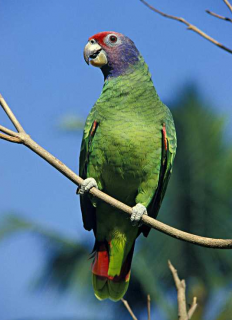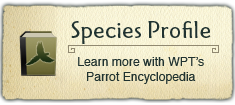Project Regions:
Red-tailed Amazon |
|
|
Project Status: Completed | 1994 - 1999
Collaborators/Funders
American Bird Conservancy (ABC), Kyle Brown Legacy, Barbara Delano Foundation
Red-tailed Amazons in danger of extinction
The Red-tailed Amazon (Amazona brasiliensis) has suffered severe losses in the wild due to heavy trapping for the wild bird trade, and destruction of nest sites.
Project and progress: In 1999, WPT and American Bird Conservancy (ABC) provided funding for education on the plight of the Red-tailed Amazon to local indigenous people.
Outcomes: The World Parrot Trust teamed with ABC headed by Mike Parr in 1999 to gather parrot conservation funds, monies that came from estate, personal and government (USFWS) contributions, to help save the species. A call went out for applications for grants covering various projects, and a team of reviewers narrowed down the list to 14 projects, 12 of them parrot-related. The Red-tailed Amazon environmental education program was one of them, and was aided by the joint funding of the two organizations. This project took place at the Superagui National Park, and was led by Suzana M. Padua.
Wild population: 6000 - 6700
Where found: The Red-tailed Amazon (Amazona brasiliensis) is found on the SE coast of Brazil, near Sao Paulo and Parana.
History: The Red-tailed Amazon's population was thought to have declined from about 3,500-4,500 birds in the 1980s to fewer than 2,000 individuals by 1991-1992 (Martuscelli and Scherer Neto 1993). The population has now been estimated to be as high as 5500 individuals. A recent survey in Parana indicates a decline in that area from 3600 to 3379 (F. Olmos in litt. 2003) Their low overall population qualifies them a Vulnerable listing by IUCN.
Threats:
- Habitat fragmentation and loss to boat building and agriculture
- Capture for the wild bird trade
- Destruction of nest trees by poachers
- Future threat from tourism
Ecology: The Red-tailed Amazon prefers a complex network of channels, swamps and other wet areas up to an elevation of 700m (2296 ft). Populations are now restricted to lowland forest on coastlines, and wetlands such as freshwater swamps, humid forest and mangroves. Birds usually feed on fruits and flowers in pairs or flocks up to 20. Birds eat fruits, flowers; Callophyllum brasiliense important. Roosts are in groups on small islands in channels; birds are resident in flooded forest.


































